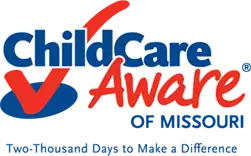Maximizing Missouri’s 2025 Child Care Tax Credits: What Parents Need to Know
A childcare program is a lifeline for working parents across Missouri. Many face struggles to find affordable, reliable care for their children. The time and effort parents make can affect their daily routine, including their wallets, and their ability to work, advance in their careers, and provide for their families. In 2025, Missouri is rolling out a suite of new child care tax credits designed to ease this burden, empower families, and strengthen the state’s workforce.
What Are Child Care Tax Credits?
A benefit from the government to help parents or guardians offset the high costs of childcare. These credits reduce the amount of tax parents owe, based on how much they spent on eligible care services like daycare, after-school programs, or a babysitter, so you could work or attend school. In the U.S., the Child and Dependent Care Tax Credit is the most common federal program, but many states also offer their versions, often with unique eligibility rules and income limits.
Missouri Child Care Challenge
Imagine a typical Missouri family: Two working parents, both juggling demanding jobs, school drop-offs, and the ever-rising cost of child care. For years, they’ve felt squeezed, sometimes forced to choose between career and caregiving. Missouri faces a severe shortage of child care slots, with only one spot available for every three children under five. This crisis costs the state over 1.3$ billion annually in lost productivity and tax revenue.
But 2025 gets them something resolving. With the passage of House Bill 269, Missouri is investing in families and businesses and providing quality child care that is more accessible and affordable than ever. These credits aim to:
- Encourage donations and investments in child care providers.
- Incentivize employers to offer child care assistance.
- Support providers in expanding and improving their services.
What Are Missouri’s 2025 Child Care Tax Credits?
| Tax Credit Name | Who Benefits | What it Does | Annual Cap |
|---|---|---|---|
| Child Care Contribution Tax Credit | Parents, businesses, donors | 75% credit for contributions to licensed child care providers or intermediaries | $20 million |
| Employer-Provided Child Care Assistance Tax Credit | Employers with 2+ employees | 30% credit for employer-paid child care expenses (up to $200,000 per year) | $20 million |
| Child Care Providers Tax Credit | Licensed child care providers with 3+ employees | Credits for payroll taxes and up to 30% of capital expenditures (min. $1,000, max. $200,000 per year) | $20 million |
If demand exceeds the cap, the program can grow by 15%, with those increases reserved for providers in “child care deserts,” where care is especially hard to find.
How Do These Credits Affect Missouri Parents?
- Lower child care costs: As providers receive more funding and support, they can improve quality and potentially stabilize or reduce fees.
- More child care options: Increased investment helps expand capacity, especially in underserved areas.A
- Employer benefits: If your employer offers child care assistance, they may claim tax credits, which can translate into better benefits for you.
- Tax savings: If you donate to a child care provider, you may qualify for a substantial tax credit.
How Missouri Parents Can Claim These Credits
Here’s the step by step for parents to maximize these credits,
Understand Your Eligibility
- If you’re making donations to child care providers, keep detailed records and verify the provider’s licensing status.
- If your employer offers child care benefits, ask about their participation in the tax credit program.
Keep Accurate Documentation
- Save receipts, contracts and payment records for all childcare expenses and donations.
- Request official statements from providers confirming your payments or donations.
Coordinate Benefits
- If you use a Dependent Care Flexible Spending Account or other employer benefits, plan your expenses carefully to maximize tax advantages.
- Remember that some benefits may reduce the amount of expenses eligible for tax credits, so consult a tax professional.
Advocate for Employer Support
- Encourage your employer to explore the Employer-Provide childcare assistance Tax Credit.
- Employers can reduce their tax burden while offering valuable benefits to employee.
Support Your Child Care Provider
- Consider making direct co
Common Mistakes to Avoid
- Failing to keep documentation: Without proof, you cannot claim credits.
- Overlooking employer benefits: Many parents don’t realize their employers may already offer child care assistance programs.
- Double-dipping: Don’t claim the same expenses for multiple tax benefits without understanding IRS rules.
- Missing deadlines: Tax credits must be claimed in the proper tax year with timely filings.
Conclusion: Plan Ahead and Keep More of What You Earn
Childcare is essential to family stability and economic success. Missouri’s 2025 Child Care Tax Credits offer a powerful opportunity to ease the financial burden on parents, empower providers, and encourage businesses to support their employees. By understanding and maximizing these credits, Missouri families can take a big step toward affordable, quality childcare and a brighter future. Resources like Child Care Aware of Missouri can help parents navigate available support and stay informed.
If you found this article helpful, share it with other Missouri parents and employers who could benefit. Together, we can build a stronger, more family-friendly Missouri.




